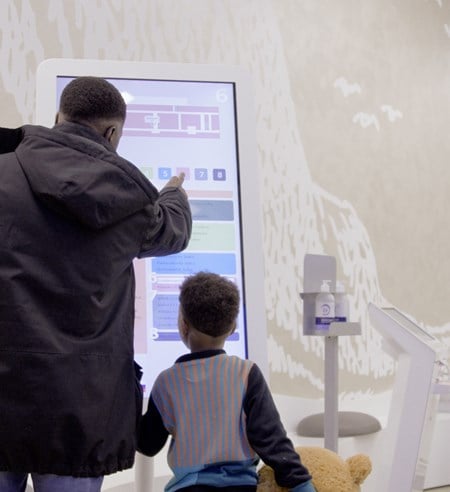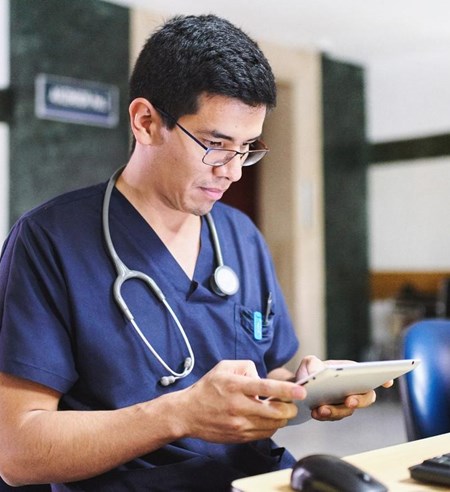Lead product manager, Tietoevry Care
The challenge
The health and social services reform is ongoing in Finland. The reform is governed by national directives and the law. The reform also impacts the customer information systems, and the interoperability of the systems is ensured by common data structures, which will change the previous recording practices of social services.
The solution
The social care customer information system Lifecare facilitates the statutory recording of customer data and supports the customer management of social care. The new version of the system streamlines reporting, supports statistics making, and data sharing.
About the customer
Lifecare Social welfare has been implemented in the Päijät-Häme wellbeing services county in the working-aged people’s service task since April 2022. Altogether there are seven service tasks; the other six will be taken into use at the beginning of November 2022. From January 2023, the Päijät-Häme wellbeing services county will include 10 municipalities with approximately 200 000 inhabitants. Lifecare social care system will be used by up to 2000 professionals.
Easier customership management
Lifecare facilitates better management of customership, making outlining the overall picture easier.
Clearer processes
More unambiguous reporting processes will help in saving time for the social work itself.
More efficient use of data
Lifecare follows national document structures, and with that, it facilitates statistics-making, streamlines reporting, and supports data sharing.
Grand changes ahead: THL’s registering requirements and a new version of the customer information system
Päijät-Häme wellbeing services county area is the first in Finland to start using the updated Lifecare Social welfare customer information system developed by Tietoevry. The solution follows the new national regulations and requirements for the recording of customer data.
Tietoevry has been collaborating closely with the national authorities in preparing the Lifecare social care customer information system. The open data model - openEHR - has facilitated planning based on the end user’s needs. According to the Päijät-Häme social care professionals, the deployment of the system has proceeded well. The challenges of deployment learning have been solved based on the feedback gathered from the field together with Tietoevry.
The challenges derived from learning the new customer information system, but first and foremost, from comprehending the new national registering requirements defined by THL (National Institute for Health and Welfare). This means that social care professionals are facing two big changes at the same time.
“The introduction to the new system has succeeded quite well. Many of the challenges are directly related to THL and their requirements”, says Mari Sisso, leading social worker for working-aged people’s services for the Päijät-Häme wellbeing services county.
Amongst other significant changes, THL has created new service classifications. There are dozens of them within the working-aged people’s service task. In addition, the headings and the requirements for the content of documents have changed.
“The beginning of the project has proceeded with speed. The deployment was planned thoroughly and with time”, says Sanna Hämäläinen, the product head for social care applications for the Päijät-Häme wellbeing services county.
Class teaching will be history - independent learning has the major role
According to Mari Sisso and Jenny Kokkonen, developers of social care in the Päijät-Häme wellbeing services county, the role of training, thorough independent studying, and support staff have become crucially important in guaranteeing the success of the deployment of the new version of the system.
“In the beginning, the users will understandably compare the old and the new versions, because the operational logic of these systems is different. Also, the outlook of the systems is different; certain selections or options won’t show where users were accustomed to seeing them”, Kokkonen says.
In the beginning, the challenge for users was getting used to the navigation in the new version of the Lifecare system. The professionals highlight the significance of training before the deployment. The next service tasks will be introduced at the beginning of November, and the training will be more exhaustive by then.
“Independent studying and rehearsing will be demanded more than previously. In addition, there will be support clinics and new support staff will do the groundwork in different units to facilitate the deployment,” Kokkonen describes.
Lifecare social care system’s recording mode already corresponds to the recording requirements by THL
The most significant change for social care professionals in the deployment of Lifecare social care is the change in recording data. According to Sisso, reporting changed in a very concrete manner.
“There are changes in the processes, such as the assessment of notifying and contacting. In the new version of the system, the assessment includes a document that didn’t previously exist. Even though we’ve been executing assessments previously, it hasn’t been as systematic as it is now”, Sisso explains.
Even though we’ve been executing assessments previously, it hasn’t been as systematic as it is now.
Mari Sisso
Leading social worker for working aged people services, Päijät-Häme wellbeing services county
Due to the new requirements by THL, recording has to be done now in more detail. Even though according to the professionals, recording takes more time now than before, after adapting to the new system, the processes do become clearer, and they can save time, Hämäläinen reminds.
According to Sisso, the new version of Lifecare system enables the creation of customer compilations and a clear view of one’s own customers. Hämäläinen agrees:
“The overall view of the customerships is more evolved than before. The new version of the system includes impulse notifications and work queues, and it makes your own work far easier to manage.”
The overall view of the customerships is more evolved than before.
Sanna Hämäläinen
The product head for social care applications, Päijät-Häme wellbeing services county
Further development work continues together with the social care professionals
The social care professionals in the Päijät-Häme wellbeing services county have directly been involved in the development of the new system via the feedback collected from them. Hämäläinen emphasizes that the more users in the system, the more feedback is collected – and the more the system can be developed and improved.
“The best feedback comes from the co-development itself”, Hämäläinen says.
Kokkonen verifies that when social care professionals participate in the development work, it gives them an opportunity to directly impact how the new interface looks. The social care professionals can give suggestions and based on them, Tietoevry develops the system in a more user-friendly direction.
“We have wanted to involve the social care professionals since the beginning, in order for the improvement suggestions to stem from the field. I believe that this approach will bear fruit.”
Kokkonen also believes that as the project proceeds, and as the well-being wellbeing services county joins the national Kanta services, the benefits of the new system will become more and more visible.
“Acquiring and exchanging customer data is expected to become easier, as well as information sharing”, Kokkonen says.
We have wanted to include the social care professionals since the beginning, in order for the improvement suggestions to stem from the field. I believe that this approach will bare fruit.
Jenny Kokkonen
Developer of social work, Päijät-Häme wellbeing services county
Digitalized solutions simplify the everyday life of social care - find out more!
Blog post: Uudistamme kotihoidon ratkaisuja yhdessä asiakkaidemme kanssa (in Finnish only)





